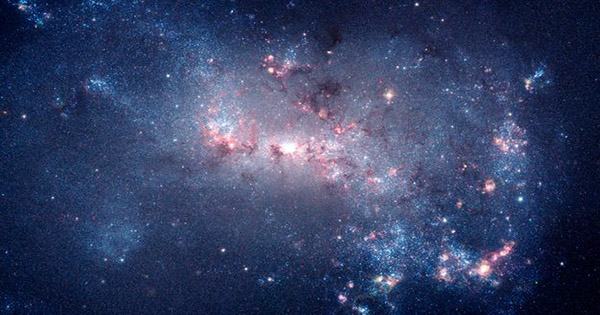The Evolutionary Map of the Universe (EMU) survey certainly depends on expectations. It is expected to detect 40 million galaxies and it seems to have searched thousands even when it is not looking for them. As part of the EMU Early Science Project, Clara M. Pennock and Dr. Jacco van Loon observe the Large Magellanic Cloud (LMC) using a radio observatory, one of the closest galaxies in the Milky Way.
The results are published in the monthly notice of the Royal Astronomical Society. The team found 54,612 radio sources in observations, including galaxies and LMCs, and distant galaxy objects. Lead author Pennock, a graduate researcher at Keele University, said in a statement, “Sharp and sensitive new images reveal thousands of radio sources we have never seen before. Most of these are actually millions or even billions of light-years outside the big Magellanic Cloud.

“We usually see them because of the supermassive black holes at their centers that can be detected at all wavelengths, especially on the radio. But we have also begun to look for many galaxies where the stars are forming at an extraordinary rate. The combination of this data with previous observations of X-ray, optical and infrared telescopes will allow us to explore these galaxies in extraordinary detail. LMC is located 158,200 light-years from Earth and is home to millions of stars. As a major satellite of the Milky Way, it provides insights into near and far galaxies by studying.
“Since many stars and nebulae are packed together, the increased sharpness of the image has helped to discover radio-emitting stars and compact nebulae at LMC. We see all sorts of radio sources, from individual new stars to planetary nebulae, which result from the death of a star like the Sun, “added Dr. Van Loon, of Kill University. EMU is one of the scientific studies conducted by the Australian Square Kilometer Array Pathfinder (ASKAP). It is the precursor to the square kilometer array that will become the world’s largest radio observatory built between Australia and South Africa.
“I’m delighted to see these exciting results from the initial EMU observations. EMU is an incredibly ambitious project with scientific goals that explain everything from understanding the evolution of stars and galaxies to cosmic measurements of dark matter and dark energy, and much more.”















